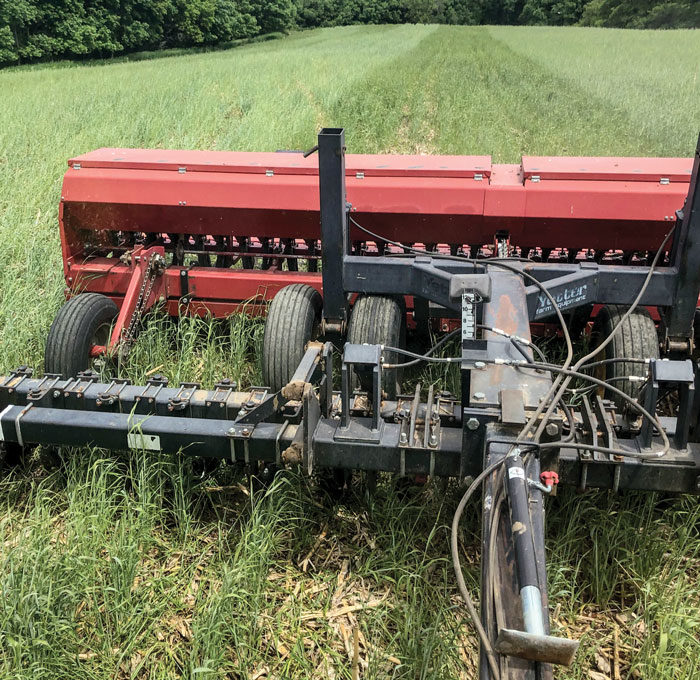No-Till Farmer
Get full access NOW to the most comprehensive, powerful and easy-to-use online resource for no-tillage practices. Just one good idea will pay for your subscription hundreds of times over.

SUCCESSFULLY PLANTING GREEN. No-till soybeans are planted into green cereal rye at the end of May to early June. Soybeans are drilled at 180,000-200,000 seeds per acre.
About 8 years ago, when Ben Dwire learned that no-tilling required less equipment and labor, and could make planting crops as easy as pulling into the field and getting started, he started questioning conventional methods. Dwire and his wife, Kristi, who farm 550 acres near Arco, Minn., turned to Kristi’s father, who no-tills in north central South Dakota, for advice.
“We had been borrowing a lot of equipment from my dad and brother, who farm nearby,” says Dwire. “As we started buying more of our own equipment, we decided to bite the bullet and go into no-till.”
It took Dwire 2 years to fully transition to no-till.
He was the first in his family to no-till. His brother switched to no-till in 2019, and his father now no-tills half of his acres after seeing Dwire’s success.
Dwire plants a third of his fields with small grains such as food-grade oats or wheat, a third of the fields with corn and a third with food grade soybeans. Food-grade oats go to a processing facility in St. Ansgar, Iowa, where they’re used for Oatly oat milk.
Dwire’s crop rotation includes seeding cover crops on two-thirds of his acres every year. Oats are typically seeded in early April at 3.25-3.5 bushels per acre, for a final stand of 1.3 million plants per acre. They’re interseeded with a red clover cover crop mix to build nitrogen (N) for the next cash crop and to graze his 30 pairs of Red…